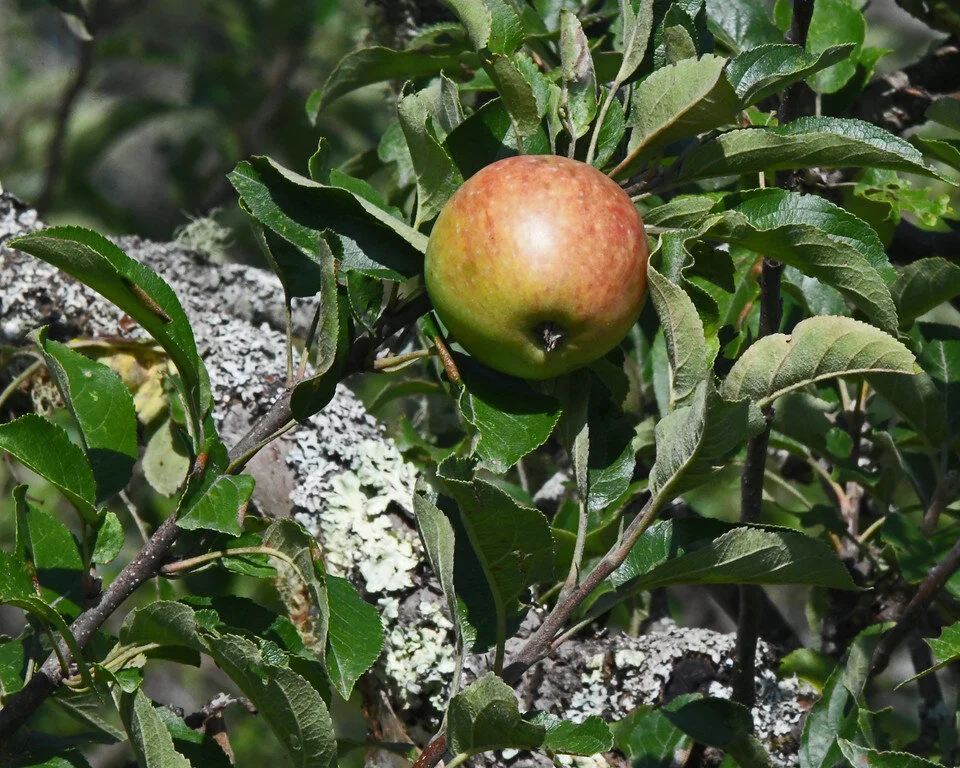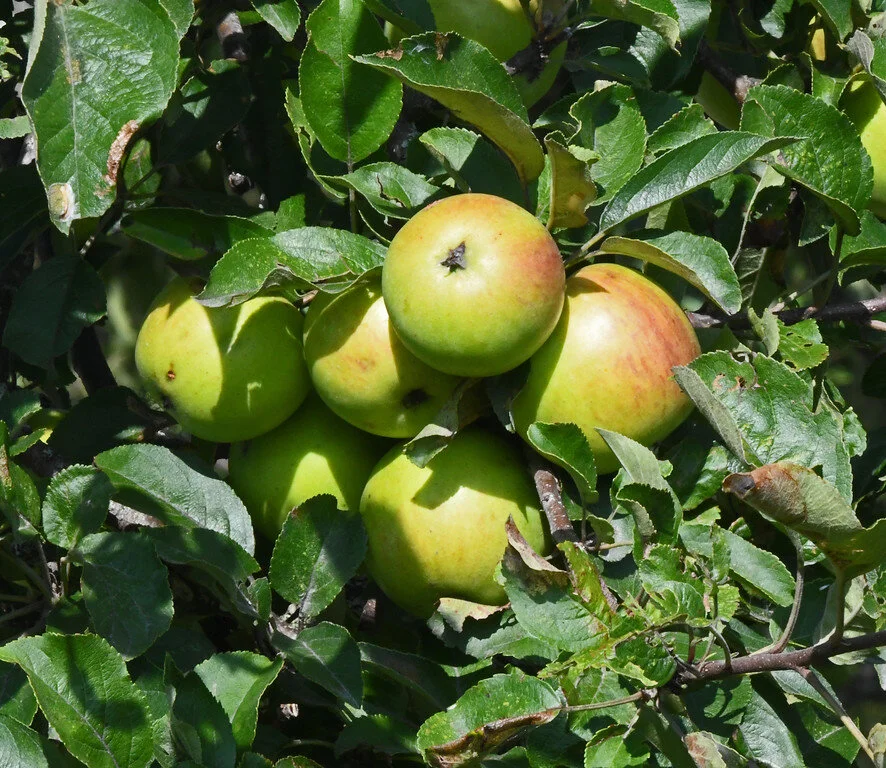It looks like we’re going to have a good crop of “wild” apples here in the fall, judging by the state of the fruit now. By “wild,” I mean apples in the many old trees that have been abandoned to nature, some for well over 100 years.
The deer have started to eat the apples, but for those of us who don’t have the teeth and taste buds of those tough ruminants, this fruit is too hard and much too tart. (Old-timers called them “spitters” due to the involuntary reaction humans had when trying to taste an August apple, as I foolishly did yesterday. Ugh.)
We suspect that virtually all the old apple trees around here were planted primarily to produce hard cider and applejack liquor. In days of yore in rural areas, cider often was preferred over coffee and tea (because water in those drinks frequently got contaminated) and even more popular than beer and wine (because cider was less expensive).
Nowadays, a fair number of local apples will be picked and pressed by neighbors to make cider. We hear that it takes about 36 mature apples to make a gallon of apple cider with a bit of a kick. See also the image in the first Comment space. (Images taken in Brooklin, Maine, on August 15 and 18, 2021.)





